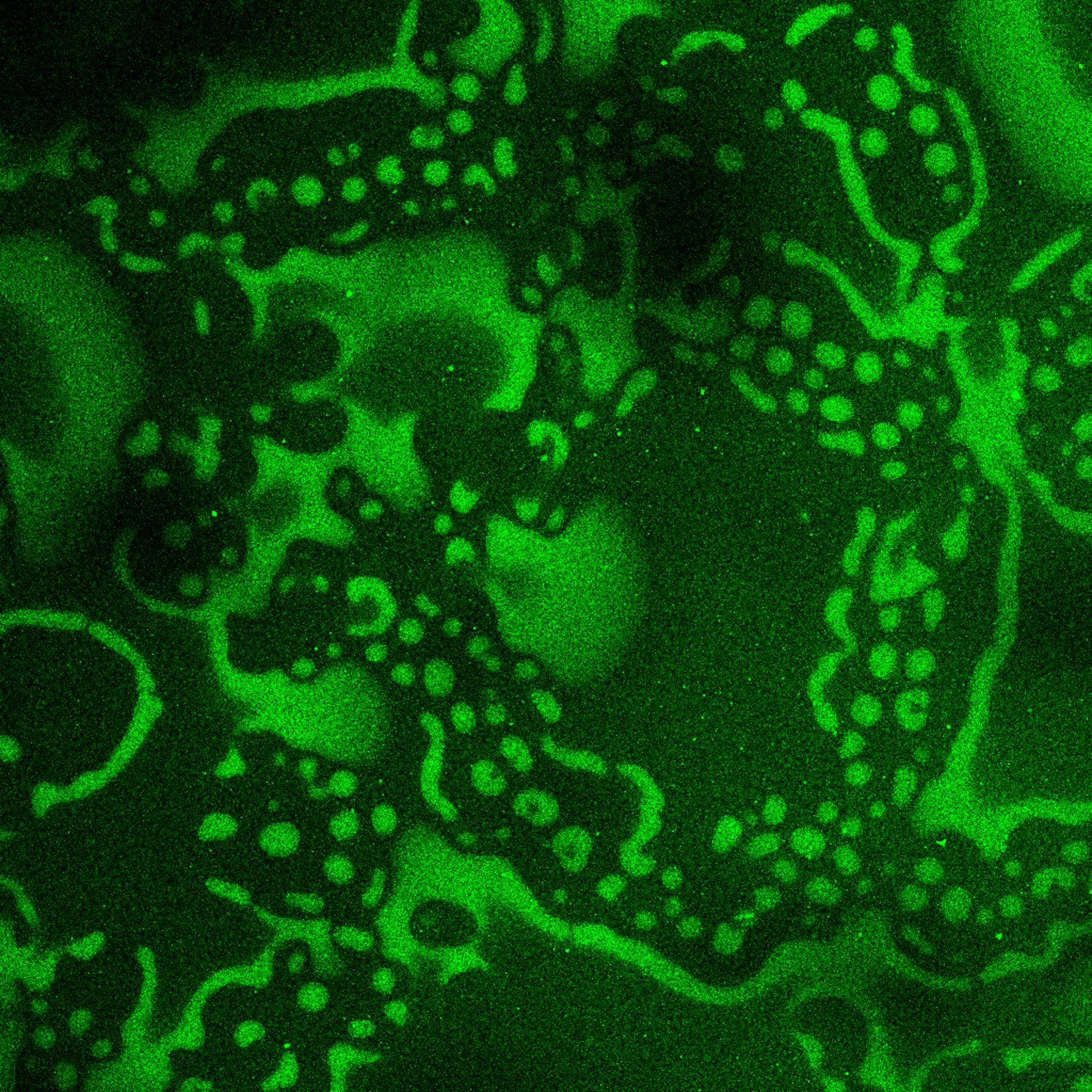Much More Than Hand-Waving
Undergraduate exploratory work in membranes, liposomes and more.
Aiden Powers ’26, an undergraduate studying Applied Mathematics and Physics, spends hours and hours observing patterns too small to see with the naked eye. In the Duclos Lab, he studies how proteins behave on three-dimensional membranes and tries to decipher the rules governing how proteins organize themselves, a process critical to life at a cellular level.
Powers first joined the Duclos Lab his junior year in order to gain lab experience before applying to graduate school.
His research was initially inspired by the experiments of a postdoctoral researcher Amelie Chardac ’24 who studied the active form of MinE, a protein in E. Coli, which produces traveling waves through its movement. These are essentially moving patterns that sweep across the membrane of the cell like a wave across a surface. After confirming the system worked consistently, Powers expanded the study to the static form of MinE, which mostly stays in place and forms stationary spots or standing waves.
Now, Powers’ research focuses on two proteins in E. coli, MinD and MinE, which form the “Min system,” guiding bacterial cells to find their midpoint and divide evenly. Traditionally, these proteins are studied on flat, two-dimensional membranes, which are easier to work with but do not fully replicate a cell’s three-dimensional environment. Powers’ work examines how Min proteins behave on curved surfaces, providing a more accurate model of cellular geometry.
To create the three-dimensional membranes, Powers uses liposomes which are tiny spherical vesicles made of lipid bilayers that mimic cell membranes. He prepares these liposomes in advance then mixes them with MinD and MinE proteins and ATP, the molecule that powers cellular reactions. The mixture is flowed between microscope slides coated with polyethylene glycol acrylamide, which prevents the membranes from sticking to the glass. Once assembled, the system can be observed under a microscope as the proteins form visible patterns.
Interestingly, these patterns vary widely. Some are static, forming spots or standing waves, while others travel across the membrane like ripples or spirals. Through his experiments, Powers has realized that the patterns depend on the relative concentrations of MinD and MinE: More MinD elongates waves while higher MinE often produces more static spots. Powers systematically varies these ratios, developing a better understanding of the link between protein concentration and observed behavior.
Interesting patterns emerge from the interactions between the proteins. MinD binds to the membrane first then MinE displaces it in a cyclical process. This binding and unbinding produces rhythmic movement that generates visible shapes. Slight changes in the concentrations of MinD or MinE can dramatically alter the resulting patterns, demonstrating the sensitivity of the system.
Beyond protein ratios, Powers is also investigating how membrane size affects pattern formation. Larger liposomes provide more surface area, producing waves and spirals that differ from those on smaller spheres. He is also exploring experiments where proteins are contained in droplets rather than open solutions, mimicking the crowded environment inside cells. These setups could reveal how spatial constraints influence protein behavior.
Although the work is exploratory, it has broader implications for understanding basic cellular processes. The Min system is essential for proper bacterial cell division, and studying its dynamics offers insight into how cells organize themselves. The principles of pattern formation also apply to other cellular phenomena, making this research relevant beyond bacterial systems.
As he researches his senior thesis, Powers is expanding his dataset of protein concentrations and resulting patterns. He also plans to test smaller liposomes and protein containment in droplets to see how these factors influence pattern formation.
With some luck, one day, the work that Powers and the team at Duclos are doing will allow us to do less hand-waving when describing the fundamental complexity of living things, leading to us asking better questions and understanding more deeply the rules that govern life.



Please note All comments are eligible for publication in The Justice.